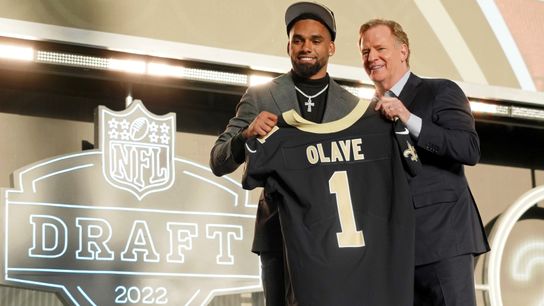The 2022 NFL draft has come and gone, an event unlike any other in our nation's favorite sport. The draft is a confluence of so many things.
It's the ultimate reality TV show, where cameras bounce us from living room to living room as we watch lives change in real time. It's the NFL's version of Lollapalooza; the league's 32 teams elbow each other in the ribs for game-changing talent, for sure, but it's a competition that is not zero sum. The draft feels like a festival because all 32 teams leave the draft better than they entered.
And it's also the one event that brings the professional and college football together. The draft may have a party vibe for the NFL, but in college football, the draft is a referendum. Every recruit wants to get paid to play ball, and so the draft is the manilla envelope in each program's mailbox that tells them whether they're succeeding or failing in that all-important task.
Yet as the draft has grown in recent years -- truly, it's become its own industry, standing on its own feet outside of NFL and college football coverage -- our analysis on the college side of the draft has not. Like pre-schoolers, we count on our fingers how picks each program produced and then we move on. Team A had eight, Team B had seven, and so therefore Team A had the better draft.
Last year, I endeavored to change this.
The thinking was simple. All draft picks are not created equal. In fact, the the entire premise of the draft is that each slot is fractionally less valuable than the one that preceded it and fractionally more valuable than the one that follows it. And so our draft analysis should track with that. An NFL team would rather own three first-round picks than three, four or even five sixth-round picks, and so we should acknowledge a college team with three first-round picks was more talented than one with three sixth-rounders.
Thus, the Selection Points formula was born. Honestly, it's a tad generous to call it a formula. I simply assign 250 points to the first pick, 249 to the second, 248 to the third, and down and down we go, like a staircase made of NFL money. Selection Points rewards quality and quantity. The higher your players are picked, the better, but you'd still rather have a seventh-rounder than no pick at all.
Florida's draft is the prime example of why Selection Points are necessary. With just three picks, the Gators tied the likes of Purdue, Illinois and Houston. You won't see their logo on many "most draft picks" graphics floating around Instagram and Twitter today. Yet with a first rounder and two more picks within the top 110, the Gators had the 15th-best draft in college football, out-scoring Wisconsin's five and Ole Miss's six.
You get the idea by now. Without further ado, here is how the Selection Points standings for the 2022 draft look:
Georgia's 15 selections broke 2004 Ohio State and 2020 LSU's tie atop the list for most total selections... but we know better than to judge a class with preschool arithmetic by now, don't we?
The draft wasn't just a referendum on college football as it stood in 2021. It also provided us clarity on how recent national champions stacked up against their peers.
Alabama's 2017 team increased its lead as the most talented of all time, while Alabama's 2020 team, just two draft classes in, passed both of Urban Meyer's champion Florida teams and 2007 LSU. LSU's 2019 team leapfrogged 2018 Clemson and moved on to the fringe of the top 10, and our newest champions have already doubled the draft output of 2010 Auburn with plenty of talent still on campus.
How high will the 2021 Bulldogs eventually climb? We'll have to wait and see where the players still on campus get drafted -- and where.
